BANANAS have been commercially cultivated in Israel since the 1930s. There are three banana producing areas, including the Carmel coast south of Haifa, the Western Galilee between the Lebanon border and Acre, and the Jordan Valley, near the Sea of Gaililee.
In the Jordan Valley area there are about 700 hectares of banana, mostly of the Grand Nain variety. These farms produce around 45,000 tonnes of packed bananas per year, harvesting mainly from March until October.
In order to overcome the fierce heat (average annual maximum temperature is 36 degrees celsius) that is a feature of this area, which is 250 meters below sea level, growers plant bananas under shade netting. The nets reduce both radiation and wind speed, while the framework that holds the netting also doubles as a trellising system. The use of shade nets has resulted in big improvements in banana yields in the area.
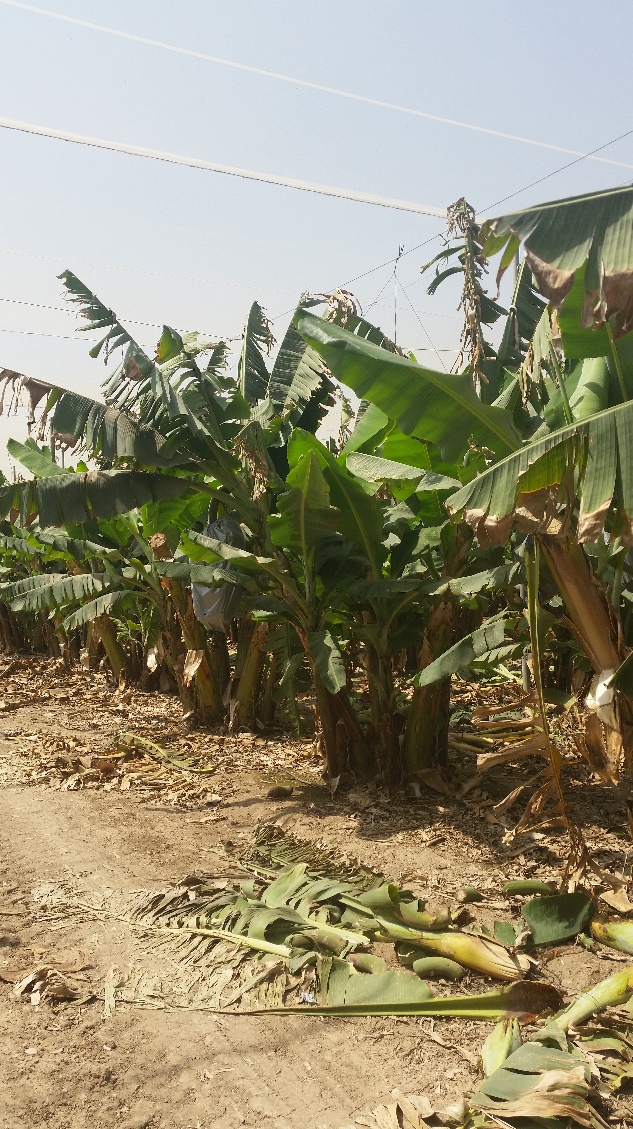
Banana plants under shade net
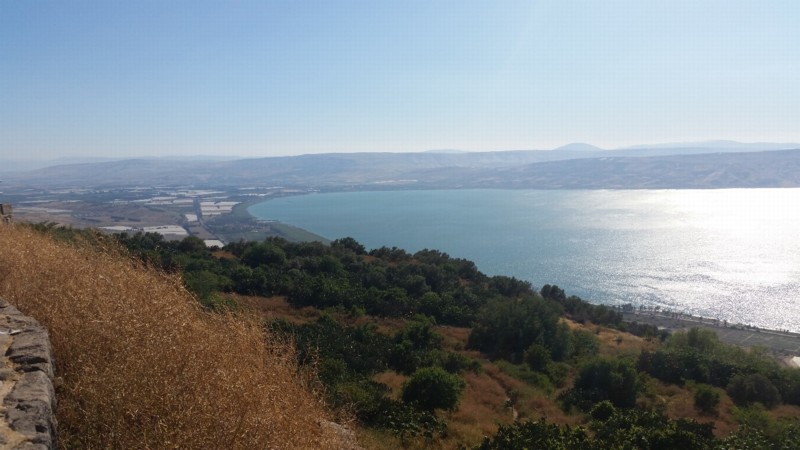
Nets covering bananas south of the Sea of Galilee
Irrigation is essential, as the average annual rainfall is only around 400 millimetres. The typical irrigation systems use trickle irrigation, comprising two to three driplines per planted row of banana. Even with the reduced requirement for irrigation under the nets, the annual irrigation applied to banana in the area is 17,600 cubic metres – or in Australian terms, 17.6 megalitres.
Planting is by tissue-cultured seedlings. Most orchards have a lifespan of around eight years, before diminishing yields caused by what locals call “soil fatigue” dictate that the orchard be re-planted.
Great care is taken to select only the seedlings true to type – and people who have a good “eye” for selecting off-types at the nursery stage are well employed.
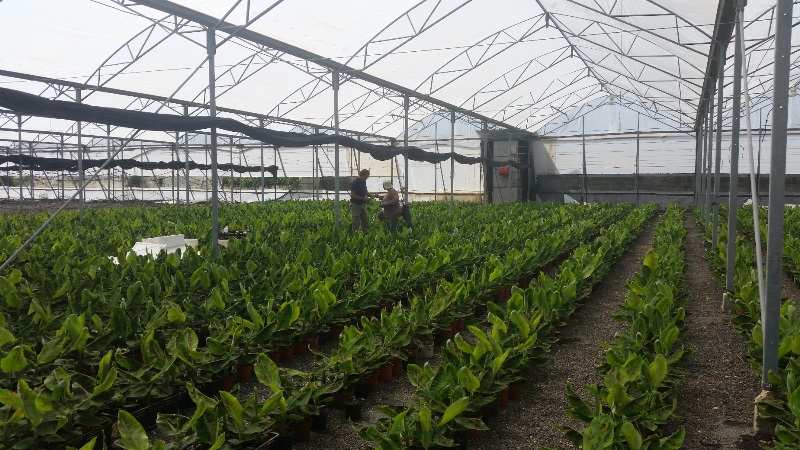
Removing “off-types” prior to planting
At the Department of Agriculture Research Station, situated at the very southern end of the Sea of Galilee, scientists like Dr Avner Silber and Dr Navot Galpaz try to understand “soil fatigue” and other issues. They engage in studying irrigation and nutrient dynamics in banana plants. Using large “lysimeters”, which are basically containers holding both soil and normal commercial plants, they collect data involving irrigation and fertiliser uptake. These lysimeters can be irrigated with known volumes of both local “scheme” water containing minerals, as well as water where minerals have been removed by reverse-osmosis. To both types of water, fertiliser of different types can be added and the tree’s growth, production and uptake of both water and fertiliser is examined. The results from these long-term trials are to be published shortly.
The Lysimeters are now being prepared to grow and study another crop that is common in the area – Mango.
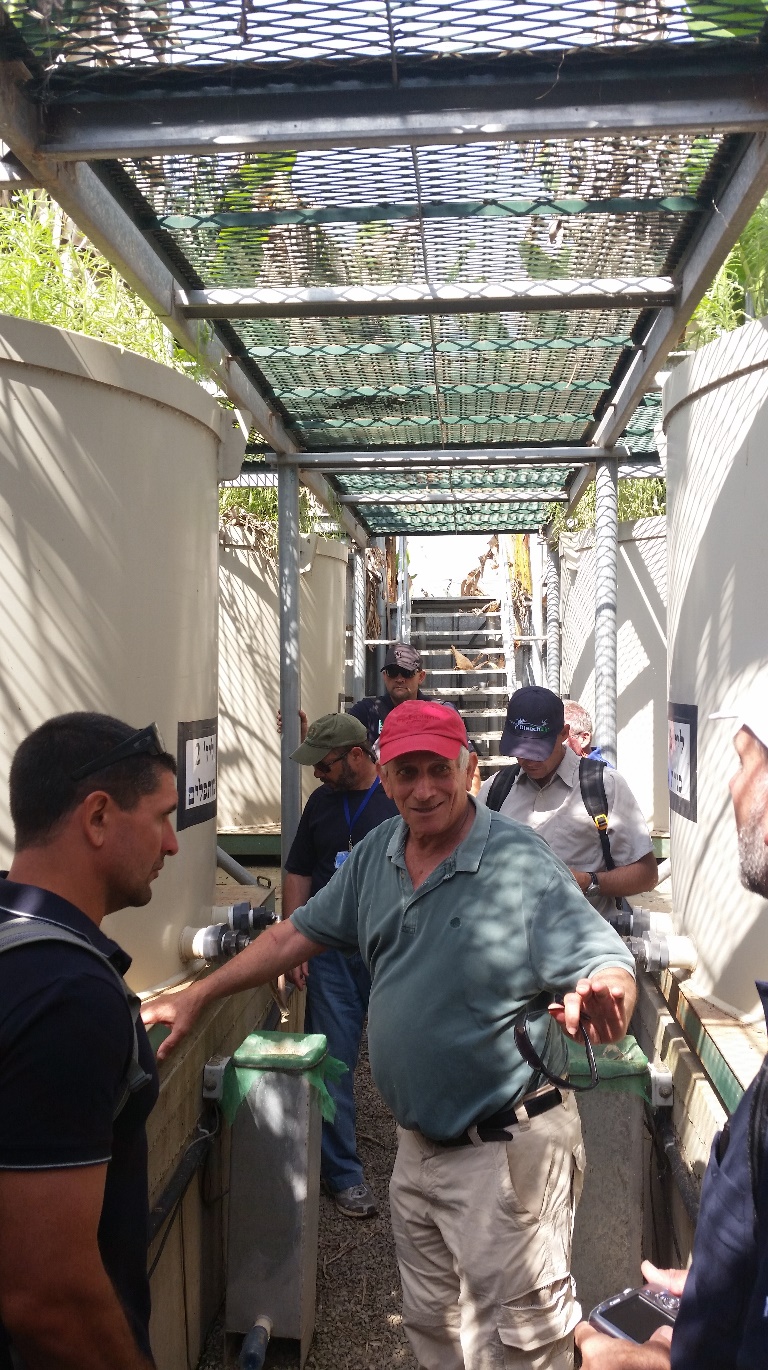
Dr Avner Silber explains Lysimeters to North Queensland growers Shayne Cini and Steve Lowe
The Zemach research centre is also responsible for extension services and the Australian group met Yuval Levy, the banana extension specialist for the area. Yuval took the group to visit farms and growers at Kibbutz Ein Gev on the eastern shore of the lake and at Kibbutz Shaar HaGolan at the south-eastern side of the lake.
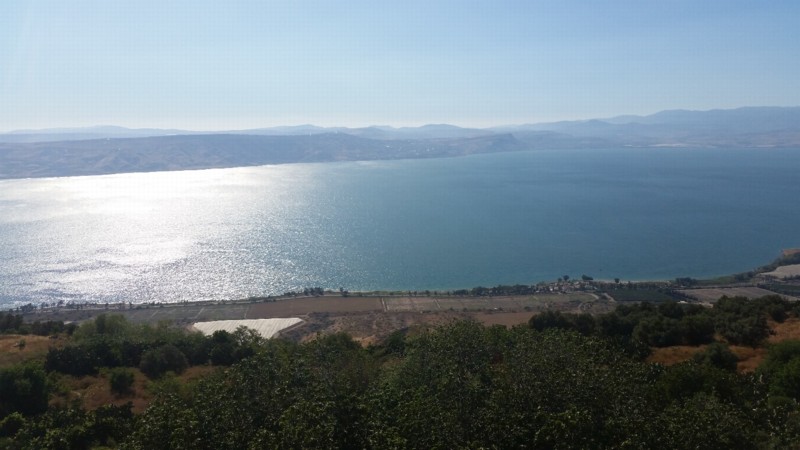
Kibbutz Ein Gev viewed from the Golan heights. Bananas are under the netted structure
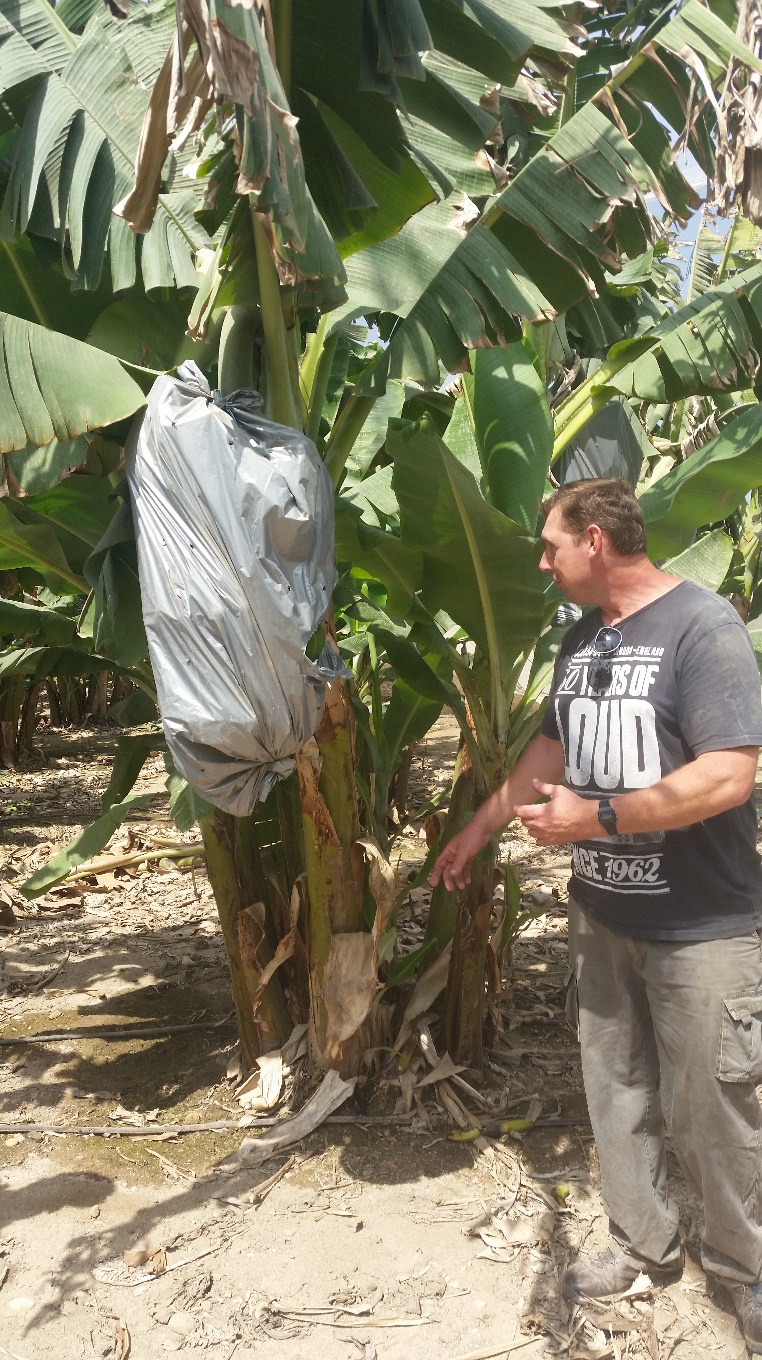
Two-year-old banana mats at Kibbutz Ein Gev
Kibbutz Ein Gev banana grower, Richard, explained the planting of seedlings in clumps (“mats”), common to Israeli banana plantations. The idea is that one or more dominant suckers in each mat protect the younger ones, then as each dominant tree is harvested, the younger ones take its place. Typically, three seedlings are planted per mat in the Jordan valley, resulting in densities of around 1800 trees/ha.
It is not unusual for young orchards in the area to yield more than 70t/ha of packed fruit. This drops to 50t/ha for older plantations.
At Kibbutz Shaar HaGolan, grower Haim Zohar showed the group an impressive planting of Gran Nain irrigated with an innovative system, the AutoAgronom. This system measures soil moisture using highly sensitive tensiometers and maintains a virtually constant level of both soil moisture and fertiliser.
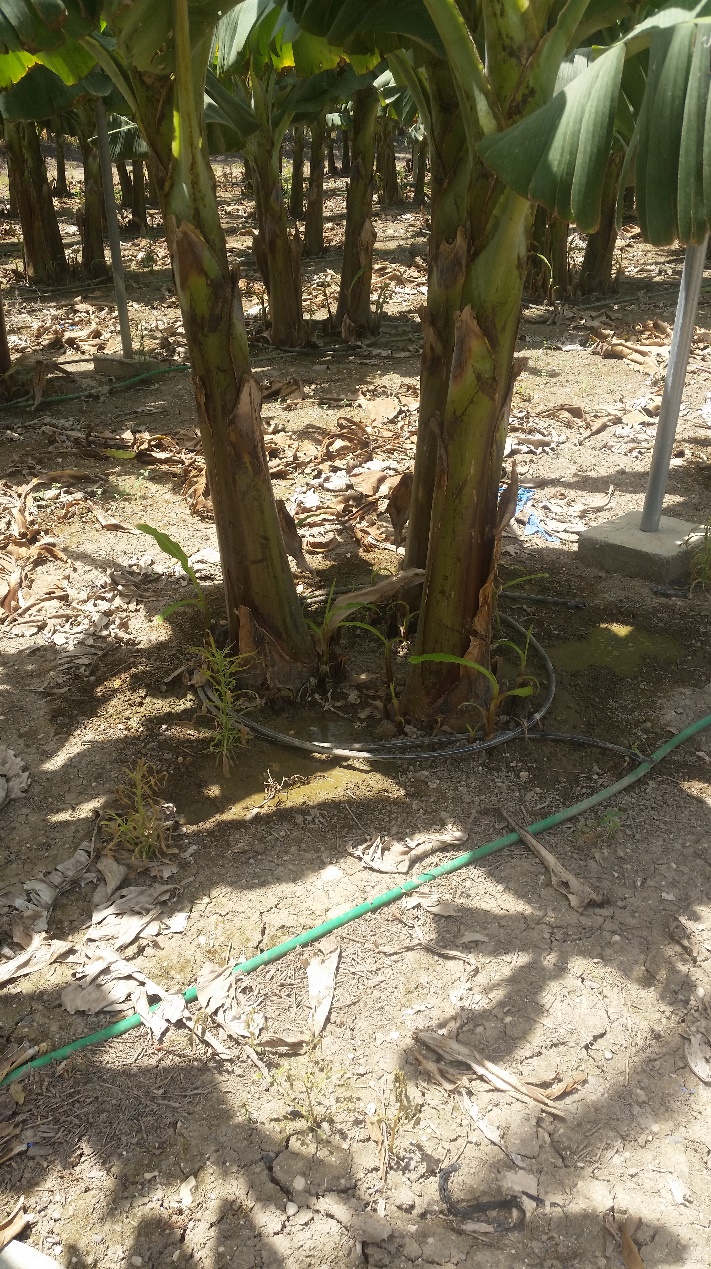
New plantation at Shaar HaGolan
In this set-up, drippers are wound around the mat and unwound as the mat grows in diameter.
Israeli growers do not have distinct rows in banana plantations. The “mats” are allowed to grow in diameter from year to year, so in time it becomes impossible to drive tractors down the original rows. Instead, a road is constructed about every 40m within the net-covered structure and bunches are carried a maximum of 20m to the tractor and trailer for transport.
The lack of tractor rows means spraying under the nets is not possible by air or ground rig. There are few pest and disease issues, probably because the cold winters help to kill insect populations and the dry air is not conducive to fungal growth. However, some systemic pesticides are applied through the irrigation system.


